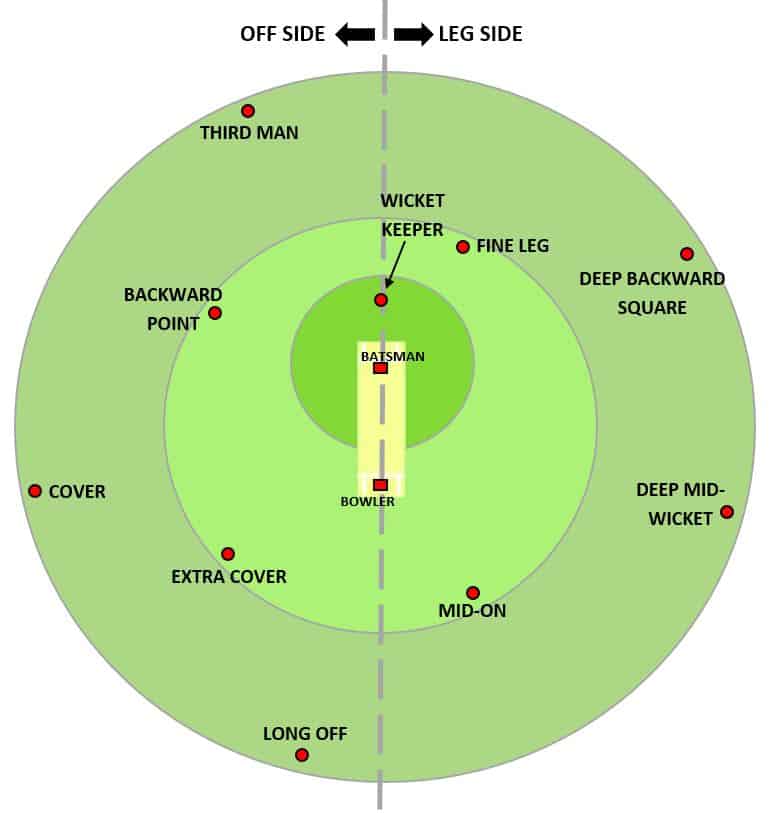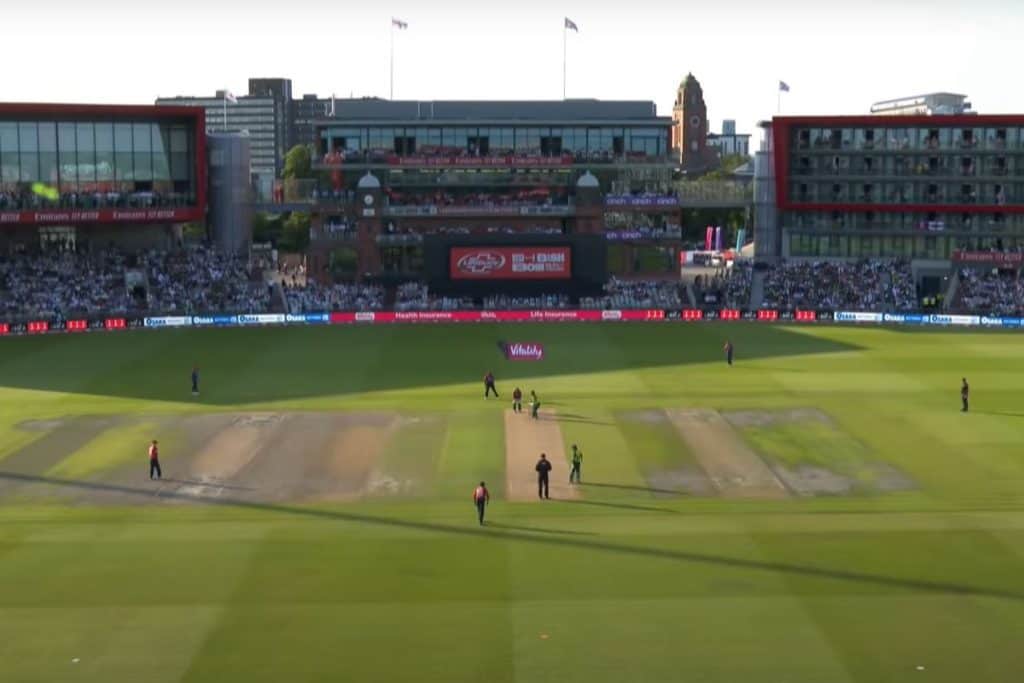T20 cricket is an thrilling, shorter format of the sport that options quick paced motion with loads of heavy hitting. The big selection of strokeplay and expertise on present make it the model of cricket that’s almost certainly to attraction to newcomers to the game. The nuances of check match cricket can usually be tough for the layperson to grasp, whereas the easy activity of hitting as many boundaries as potential and outscoring the opposite staff in 120 balls is remarkably easy. It is easy to see why cricket’s governing our bodies just like the ICC have chosen the T20 format because the one which can lead cricket’s cost into new nations and communities.
As a result of T20 is so reliant on offering most leisure, restrictions should be put in place in order that groups on the sphere can not undertake ultra-conservative approaches to the sport. Give it some thought, would T20 cricket be anyplace close to as enjoyable to observe if the fielding captains had been allowed to put 9 fielders on the boundary? I will reply that one for you – undoubtedly not!
So, if you wish to know precisely what kind of restrictions are positioned on fielding sides throughout a T20 match, this put up will clarify every little thing. I will cowl what the restrictions are and the way they differ at totally different factors in a match, and I will additionally cowl some extra basic guidelines that apply to the whole innings. On the entire, I will present you some useful diagrams so you may see precisely what I am referring to! Let’s start…
What Are The Fielding Restrictions In T20 Cricket?
In the course of the first 6 overs of an innings, a most of two fielders are allowed to face outdoors the 30-yard circle. After this, a most of 5 gamers are allowed outdoors the circle for the remainder of the innings. Moreover, there are solely 5 fielders allowed on the leg aspect of the sphere at any level within the innings.
These restrictions make it a lot simpler for batsmen to attain runs and get off to an excellent begin at the start of an innings. A excessive rating within the first 6 overs units a improbable platform for the remainder of the batsmen to observe, and normally implies that an innings will function extra boundaries and will probably be extra entertaining for spectators in consequence.
One final rule, which not as many individuals find out about, is that there’s solely allowed to be 2 fielders behind sq. on the leg aspect at any time when the ball is bowled. This rule applies to all codecs of cricket (not simply T20) and helps to cease bowlers bowling brief balls completely with a great deal of fielders behind sq. on the leg aspect. If bowlers had been allowed to do that, it might drive batsmen to play hard-to-control pictures just like the hook and the pull continually, with a number of fielders in place to catch the ball in the event that they bought it improper. Including this restriction implies that bowling a brief ball remains to be a threat for the bowler, as a result of the batsman can simply decide the gaps on the leg aspect between the diminished variety of fielders in the event that they’re expert sufficient.

The diagram above exhibits a typical discipline that the bowling captain will set through the first 6 overs of the innings. The 30-yard circle is the sunshine inexperienced circle that accommodates many of the fielders. Within the diagram you may see that there are solely two fielders on the boundary, satisfying the rule that solely two fielders are allowed outdoors the 30-yard circle on this interval. You can even see that there are solely 4 fielders on the leg aspect (mid-on, mid-wicket, sq. leg & deep wonderful leg), satisfying the rule that there should be a most of 5! Lastly, discover how there are solely 2 fielders behind sq. on the leg aspect of the sphere – at deep wonderful leg and sq. leg. If you would like to know the rest about the entire totally different fielding positions in cricket and the talents required to carry out in these positions – click on right here to learn probably the most in depth put up on the net!
The diagram under exhibits a typical discipline that the fielding captain might select to make use of at a later level within the innings. For instance, we could say that Jofra Archer is about to bowl the 18th over of the innings. Right now, the batsmen on the crease will probably be making an attempt to launch an all out assault, so the fielding captain will most likely put 5 fielders on the boundary within the batsman’s favored hitting zones with a purpose to attempt to maintain them quiet.

What Occurs If Fielding Restrictions Are Ignored/Damaged?
The umpires on the sphere and the TV replay umpires are the individuals in command of figuring out if there have been any errors made with the position of fielders through the course of a match. To do that, they may monitor the precise place of the fielders when the ball leaves the bowler’s hand. If any of the fielding restrictions are being damaged at this level, then the umpires will mechanically name and sign a no ball. Each time a fielding restriction is damaged, one other no ball will probably be referred to as.
As I simply talked about, the umpires will solely name a no ball if the fielding restrictions are being damaged because the ball is bowled. Because of this earlier than the ball is bowled, fielders could be in positions which break the principles. However it’s as much as them to get themselves into place by the point the ball is delivered. For instance, think about we had been within the 1st over of a T20 match and the bowler was getting ready to start their run up, with the fielders within the positions proven within the diagram under. You’ll be able to see within the diagram that there are literally 3 fielders outdoors the 30-yard circle, when there’s solely a most of two allowed! The fielder that the yellow arrow is pointing to is definitely alleged to be contained in the 30-yard circle at mid-off, subsequently they must stroll in rapidly to verify they’re within the appropriate place because the ball will get delivered. If they do not make it into the circle in time, the umpire will name and sign a no ball.

How Many Fielders Are There In Whole?
In T20 cricket the fielding staff can have 11 gamers on the pitch, nevertheless, not all of those are known as fielders. One of many 11 gamers would be the bowler chargeable for bowling the present over, and one would be the wicket keeper. Due to this fact, there are solely actually 9 fielders that may have their positions on the sphere adjusted from ball to ball.
How Many Fielders Are Allowed On The Off Facet In T20 Cricket?
On this put up I’ve already lined how there’s a most of 5 fielders allowed on the leg aspect for any supply. This leads many individuals to marvel if there’s a comparable rule for the variety of fielders allowed on the off aspect!
The reply to that is no, there may be not. A T20 staff that’s within the discipline can put as many fielders on the off aspect as they like! Clearly, the leg aspect of the sphere is a large goal for batsmen making an attempt to hit boundaries, so it’s at all times a sensible transfer for the fielding staff to maintain an honest variety of fielders on that aspect of the sphere to guard towards this. Placing 6 or extra fielders on the off aspect in a T20 match might be not a really impressed transfer until you could have a bowler who’s able to bowling persistently broad of the off stump – making it robust for the batsman to hit in direction of leg! Nonetheless, it must be famous that probably the most expert batsmen will most likely nonetheless discover a technique to strike by means of the leg aspect, even if you happen to’re bowling traces and lengths that make it onerous for them. Due to this fact, it is most likely greatest to separate your fielders fairly evenly between off aspect and leg aspect!
Conclusion
For those who’ve learn this put up absolutely then you definitely’re armed with all of the data you want with a purpose to perceive the fielding restrictions in T20 cricket. Hopefully by now you may see that it actually is not a straightforward activity to maintain batsmen quiet on this type of cricket – particularly through the powerplay! When a batsman sees that there are solely 2 fielders on the boundary, they know that they’ll take loads of dangers to get their staff off to a flying begin! Moreover, through the loss of life overs the fielding captain will want they may have 7 or 8 fielders on the boundary, fairly than the utmost allowable 5!
Once I’m watching a recreation, I strive to consider what fields I’d set in numerous eventualities and for various gamers. If you would like me to put up extra content material about discipline placements and methods at totally different factors in a match then be happy to drop me a message on my Instagram or twitter pages – you could find hyperlinks to these within the sidebar/backside of this web page !


